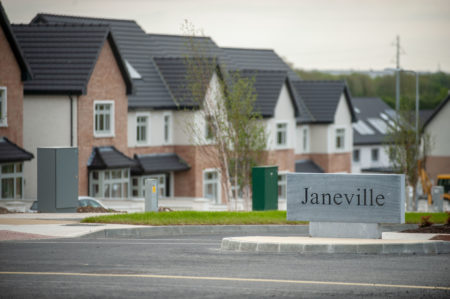4 September 2018
By Bryan Smyth
bryan@TheCork.ie
House viewings can be stressful—so we’ve put together useful tips to survive viewings
In today’s housing market, house viewings tend to fill up quickly with strong competition among buyers who are all looking for a home they can call their own. Queues and packed viewings are common place and while you may arrive at a viewing with the best intentions to check every nook and cranny, finding time to do this among the other buyers can be tough.
Here are our top tips to survive a house viewing and walk away with answers to important questions.
The old rule of location, location, location
Location is still key! Make sure this is somewhere you see yourself living. This applies within a new housing development too, for example, a cul-de-sac can be a safer place for children to play than a drive-through street; a house near the entrance to an estate will experience greater traffic than one at the far end of the scheme. House viewings go beyond the property itself. Remember to look at the neighbouring properties, especially in built up areas. Who lives next door, opposite or behind? What’s the condition of their properties, and how they interface with yours?
How long has the property been on the market? How long has it been vacant?
This is especially relevant for people who are not familiar with the various areas in a town or city. If a property has been on the market for a long time, that is certainly a sign that you should probe further – is there is something un-appealing about the area or with the property itself or was it sale agreed and the arrangement fell through for some other reason?
Property price register
Are you really getting the bargain you think? Check property prices in the area – and even on the same road – through the Property Price Register. Take into account the fact that prices are rising and you may have to pay a bit more than the buyer who snapped up the place next door some time ago. It can be hard to compare like with like. Even recent price entries will differ because one property was in better condition, had an extension, or better access than the other. You can check prices here: https://www.propertypriceregister.ie
Check for flooding
Every winter, problems with flooding seem to get worse. Is your “dream home” on a floodplain? Or beside a local river that bursts its banks every other year?
Floods are news, so any issues should show up online. Also watch out for warping and staining of skirting boards and lower walls. Also ask for an insurance quote for the address in question. Your insurer won’t be long telling you if the area is prone to flooding and/or excluded from cover.
Check the orientation
Do you want sunlight in the front or back of the house? Will you be there during the day or only during the weekends? Do you work from home? The orientation will affect everything from summer barbecues in the back garden, to sunlight in the room you use for working from home to the sense of light in your reception rooms and kitchen/dining area.
Is the building structurally sound?
Big cracks are what you are looking for – but you should expect some hairline cracks. Look especially around where extensions join, end-of-terrace walls, and bay windows, all of which can start to fall or bow away from the rest of the house. You’re looking for issues at the viewing that you can ask the homeowner or estate agent about and then ask your surveyor to investigate further later. But you can only look for what you know; a chartered surveyor with years of experience is trained to spot risks and know what needs attention. Looking at how old the roof is also important—replacing a roof can be expensive business. In addition to this, have a look at the electrics, especially in older properties – does the fuse board look ancient and in need of replacing? Keep in mind that you might need to re-wire the property, adding cost to your budget. Likewise, don’t be afraid to ask the estate agent or owner about the condition of the boiler, its age, service history. It’s another cost that can quickly chip away at the finances.
Is there any evidence of damp?
The main giveaway signs are smells of mould, flaky plaster, and watermarked walls or ceilings. It sounds obvious, but make sure you look closely near the ceiling and around the skirting boards, as well as around windows and doors. Another clue might be if the room has just been repainted – possibly covering any damp.
Storage can be a huge issue
If the wardrobes are fitted, how do they compare to the storage space you require? Is there space for non-hanging items? How big is the hall? Is there room for a pram or bike? Will the garden lend itself to a shed? Where will you store fuel? Where do wheelie bins go? Is the bed in the master room on the small side and if you need a bigger bed will there be room to walk around it?
Have you been fooled by staging?
Cleverly placed mirrors, strategic lighting, delicious smells, cosy fires, and fresh licks of paint are all tricks sellers use to make their home more appealing. It’s nice to feel you can move straight in without having to do a thing, but try to remain objective. And if their furnishing makes the space, take photos and ask what they are leaving behind. Perfect light fittings, for example, can take an age to find and replace!
New Developments
When looking at new developments, it’s important to think about future plans. Could you extend the house in the future? If you plan to stay long-term it’s important to be able to expand to meet your lifestyle needs as they possibly expand. Sometimes in new estates there are planning restrictions due to open space requirements that were part of the condition of the original planning application for the development. The size of your back garden is also a factor to consider. How much can you expand the ground floor at the rear of your house without permission?

File photo of a new housing estate in Cork, provided as a general illustration.
Pic: Brian Lougheed
Also, be clear on what’s included in the price of the house and what’s not. Not all new homes come with flooring in the hallway for example.
There may be plenty of open space at the launch but those green areas might have planning for more houses or apartments. When you select your own house make sure you understand what the neighbouring houses are like and how they will affect your home. Will the house next door block your view? In some developments you can have houses of varying heights next door to each other. Find out how close your neighbour’s home will be to yours and try to understand what you will be looking onto from each of the main living spaces.
And Lastly—Get a second opinion if possible
If there’s a second viewing available, and you’re keen on the property, go back for another look. You’ll see something different each time and that might inform your decision. If you’re lucky to have a family member or friend in the building trade, it might be worth bringing them along for a second opinion. They could spot great potential in a do-er upper or an issue that needs further investigation.


